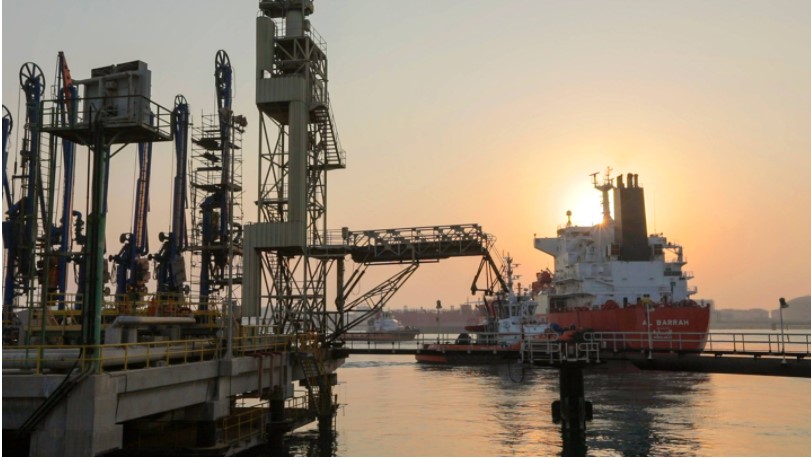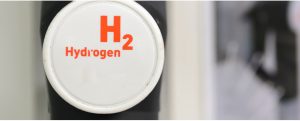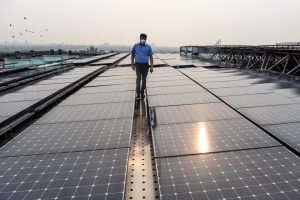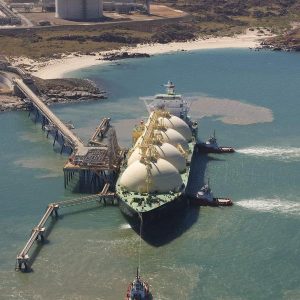(ATF) Both the world’s top oil exporter, Saudi Arabia, and the world’s third largest liquefied natural gas (LNG) importer, South Korea, have reached a deal to help reduce both countries’ carbon footprint and also further the global push for more clean hydrogen development.
The memorandum of understanding (MoU) was reached on Wednesday between state-run oil giant Saudi Aramco and Ulsan, South Korea-based Hyundai Oilbank, the oil refinery unit of Hyundai Heavy Industries (HHI), for blue hydrogen and ammonia project development, a HHI official said.
Hyundai Oilbank will import liquified petroleum gas (LPG) from Aramco and convert it to so-called blue hydrogen by using carbon capture storage (CCS) technology for CO2 emissions. The captured and stored CO2 will be shipped back to Saudi Arabia where it will be pumped in the ground to help mature fields produce more oil, a process known as enhanced oil recovery. As such, there will be no CO2 left from the process.
In the next step, Hyundai Oilbank will sell the blue hydrogen to Aramco LPG for use in electric vehicles (ev) or fuel cell power plants. It could also be used in desulfurization facilities, the official said. Hyundai Oilbank plans to set up some 300 hydrogen charging stations by 2040 across South Korea. LPG import and hydrogen production targets, however, haven’t yet been disclosed.
Blue hydrogen is produced by splitting fossil fuels, often natural gas, into hydrogen and CO2 and utilising CCS to capture emissions. This mitigates the environmental impacts on the planet. Brown hydrogen is produced by burning fossil fuels without capturing emissions, while green hydrogen is produced by using renewables, solar and wind, and leaves no carbon footprint.
The deal also calls for Aramco to provide Hyundai Oilbank with blue ammonia, which is also produced using CCS technology. Hyundai Oilbank will use the blue ammonia as fuel for its LNG boiler to be built by 2024.
South Korean hydrogen build-out
The development comes just two days after South Korean conglomerate SK Group said it aims to invest 18.5 trillion won ($16.5 billion) over the next five years to establish a domestic hydrogen energy industry.
Its subsidiary, energy company SK E&S, will invest 5.3 trillion won by 2025 to complete in South Korea the world’s largest clean hydrogen production base, the company said. The facility plans to produce 250,000 tonnes of cleaner hydrogen annually from LNG while storing emissions by CCS. Currently, South Korea imports LNG for use in its power generation sector.
Japan, Australia and now South Korea are leading clean hydrogen investment and build-out efforts in the Asia-Pacific region, while most of the other countries in the region have fallen behind, content to mostly replace dirty burning coal needed for thermal power generation with cleaner burning natural gas – but still a hydrocarbon. Gas emits about 50% less CO2 than coal when used for power generation.
Clean energy goal
For Saudi Arabia, the deal marks Riyadh’s goal of not only having a cleaner carbon footprint, given its vast oil production, but also helps its goal of diversifying away from over-reliance on crude oil production and exports. It’s not only the world’s largest crude oil exporter but the third largest producer after the US and Russia. The kingdom derives as much as 70% of its state coffers from oil revenue.
In July, Saudi Arabian crown prince Mohammed bin Salman unveiled plans to build a zero- carbon city at NEOM, with infrastructure costs of $100 billion to $200 billion. This includes what would be the world’s largest green hydrogen plant. It will be built by a consortium consisting of Air Products, the world’s leading hydrogen producer, and Saudi Arabia’s ACWA Power and NEOM
The project will consist of a 1.2 million tonne a year green ammonia plant, which will use hydrogen produced from an electrolyser powered by more than 4 GW of solar, wind and storage. Production is due to begin in 2025.
Frank Wouters, a director of the EU-GCC Clean Energy Technology Network, said the project is unique since it combines a favourable combination of solar and wind power that enables the production of extremely competitive green hydrogen and green ammonia. Its location also allows for potential exportation to Europe and East Asia, he said.
Saudi Arabia itself is also considering piping green hydrogen to Europe. “If Europe would like to buy more hydrogen, Saudi green hydrogen, we would be more than happy, and even, if the economics allow for it, even piping it all the way to somewhere in Europe,” said Saudi Energy Minister Prince Abdul Aziz bin Salman last month during a virtual meeting at the International Energy Forum.
READ MORE:
Siemens spin-offs turn their attention to hydrogen-producing turbines
Asian insurers see green future from phasing out fossil fuel investment























